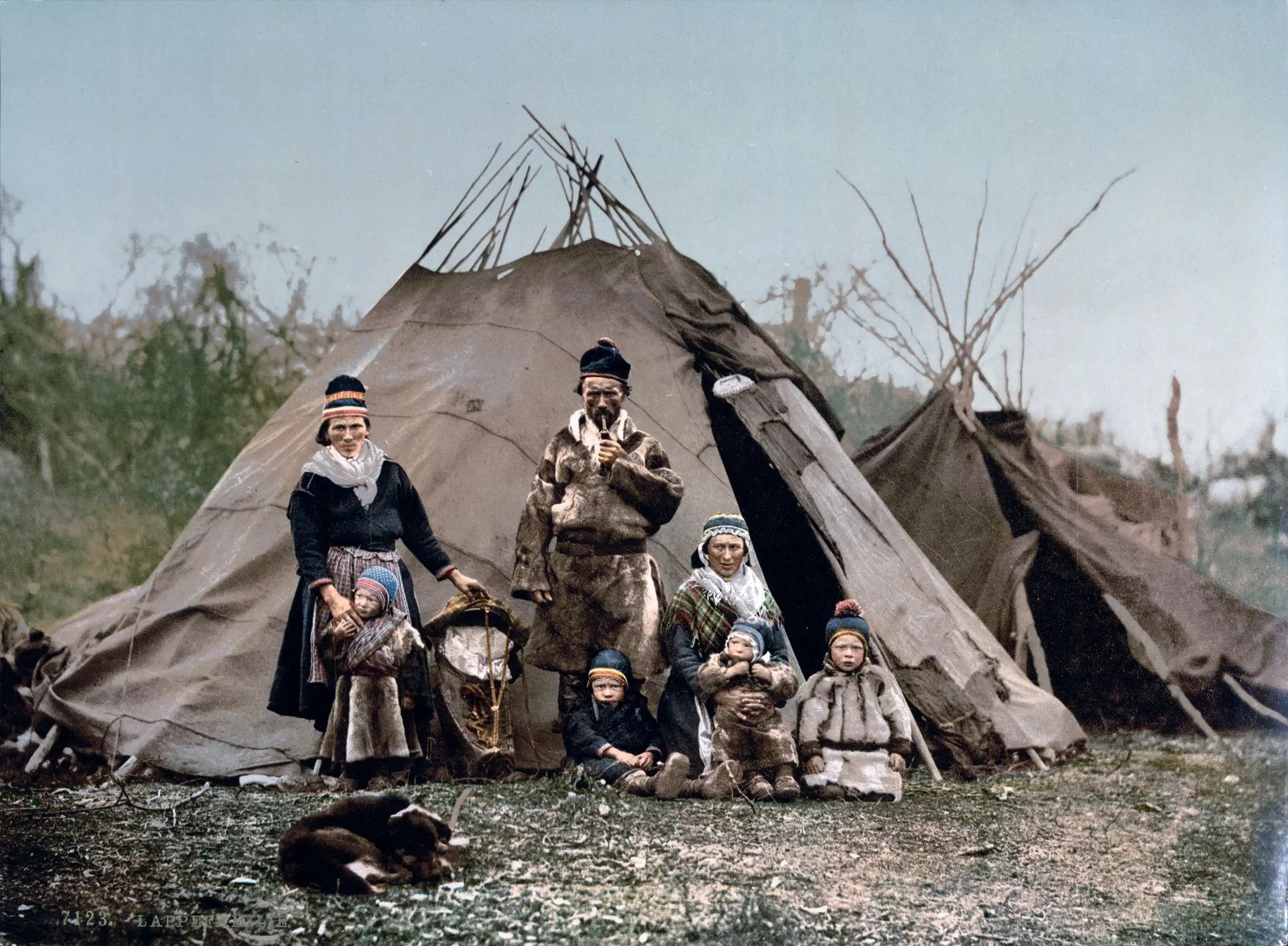
Our Nordic roots
Origin of Tentipi
We were established in 1989 in Swedish Lapland and still make tents here today.
Our Nordic tipis take inspiration from the kåta, the traditional home of the Sami people, aboriginal to this part of the world.
“Kåta” or “Lavvu” is a simple cone-shaped frame of wooden poles, covered with animal hides, with an opening at the top to let out smoke. A quick way for the nomadic reindeer herding Sami people to make a wind-resistant and functional home, easy to keep warm.
The principle was simple: the fire created warmth and the hides kept it in. The fire also provided light and a homely atmosphere. Cooking and smoking food, drying clothing and other household chores could be easily done inside.
Because the kåta weighed little in relation to its size, it was the perfect solution for a nomadic lifestyle. The wooden frame was easy to make so it was left behind when the nomadic people moved on. In practice, they often returned to their earlier camps year after year, so the kåta was set up quickly using the frame previously left there.
Tentipi Nordic tipis are based upon the traditional design principles of the Sami kåta, coupled with innovative new design and the latest materials and construction techniques.

The Sami – aboriginal people of northern Scandinavia

We call them Nordic tipis
